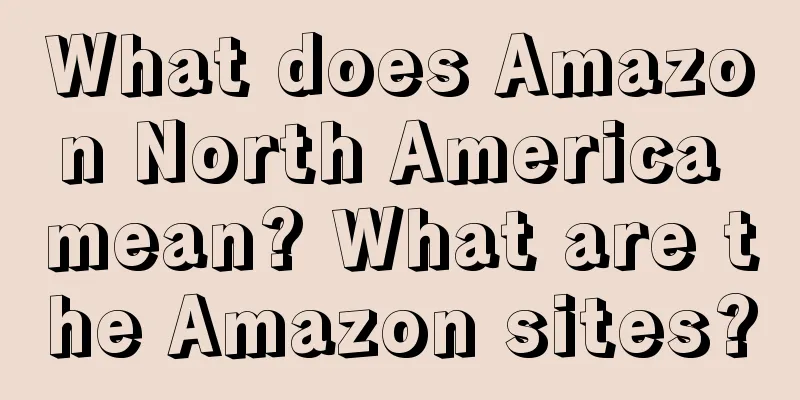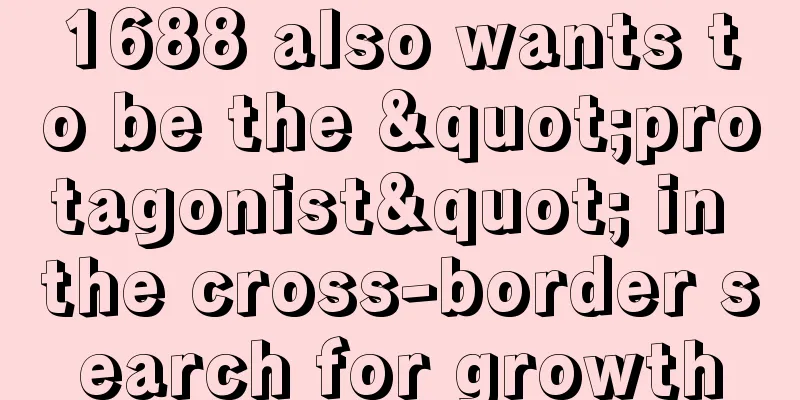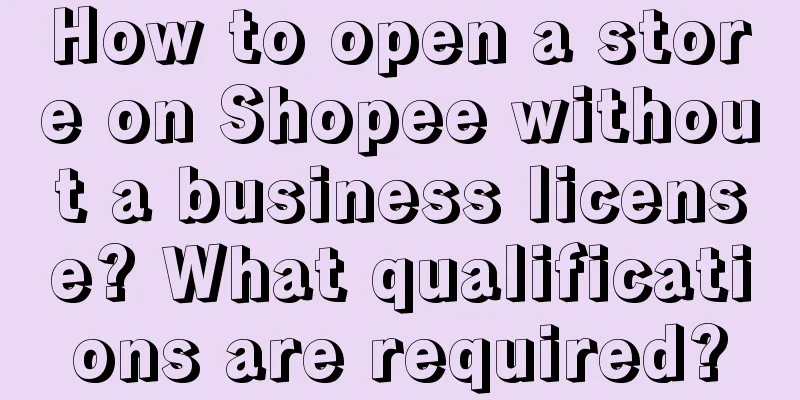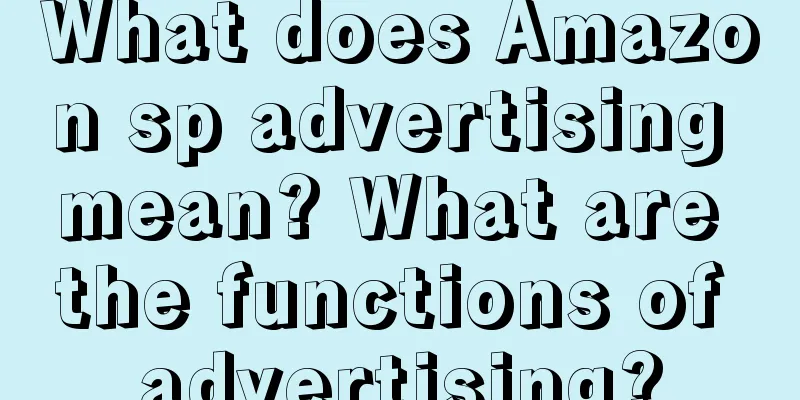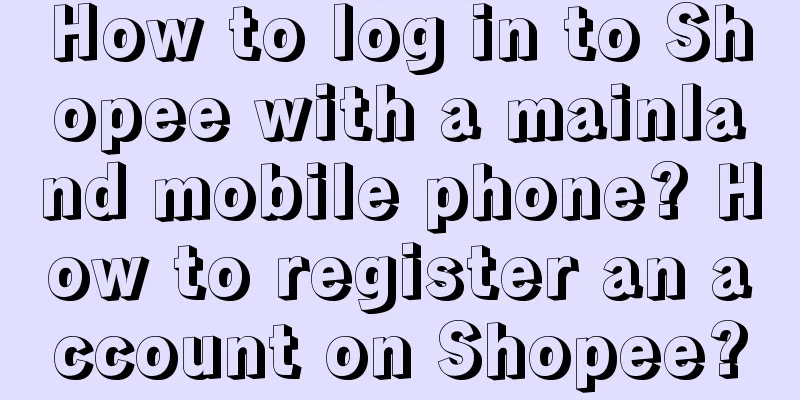The underlying logic of product homogeneity

When it comes to product homogeneity, the first thing that comes to mind is price war. So how to break the price war? Today, let's study it. 1. Overview of Product HomogenizationAs the saying goes: There are no products that cannot be sold, only knowledge that cannot be sold. From the customer's perspective, product homogeneity means that customers have many choices other than buying yours or replacing yours. Moreover, customers feel that these alternatives are almost the same as your products. In this way, product homogeneity may be reflected in the following eight dimensions:
2. The relationship between products and commoditiesHere, we mentioned a set of relative concepts: one is product, and the other is commodity. What is the difference between product and commodity? We say: Commodity = Product + Demand. Those that have not entered the terminal market are called products; those that have entered the terminal market and been tested by customers are called commodities. In the market, there is a classic saying: Customers don’t need your products, what customers need is to solve their problems. In other words: in order to facilitate better and faster transactions, commodities need to quickly match different product functions with different customer needs. That’s why we say: From product to commodity, it is a thrilling leap. Why is this? Products and commodities are two completely different dimensions.
Not only the product power but also the commodity power must be strong, only then will the sales performance be better. Here, to solve the problem of product homogeneity, we must have a deep understanding of the relationship between products and commodities. Product homogeneity does not necessarily mean that goods are also homogeneous. In other words, product differentiation can be a strategy to break the homogeneity of products. 3. Several strategies to break the product homogeneityThere are many strategies to break through the bottleneck, and we need to find different breakthrough points based on the competitive advantages of specific enterprises. Here, we focus on introducing three strategies: 1. Product homogeneity and price differentiationWhen it comes to price, the first thing that comes to mind is probably to compete on price, lower profits, and engage in price wars. This view is completely wrong. Price differentiation can be roughly divided into four strategies: high price band strategy, low price band strategy, narrow price band strategy and wide price band strategy. (1) High price band strategy. This usually occurs in the context of consumption upgrading. When the industry leader is carrying out product innovation or category differentiation to adapt to the higher consumption needs of some consumers, the high-end price band will be pulled up. At this time, between the newly pulled high-end price band and the past mass price band, there will often be market space for multiple high-end price bands such as sub-high-end price bands, light luxury price bands, and theme price bands. For example: in recent years, local liquors in many provinces have not been able to catch up with the market dividends of high-end liquors last time, and their market space has been suppressed by price bands in an instant. For example, when the electric vehicle market exploded, domestic electric vehicles priced in the mid-to-high-end price range actually surpassed some German high-end brands in terms of average sales price per vehicle within a period of time. (2) Low price strategy. This is usually due to advantages in supply chain, channels or industry collaboration, which leads to cost differentiation. We sell at a low price and still make a profit; our competitors sell at a low price and will lose money. Obviously, we do not advocate price wars. For example: Musk has invested in research and development many times in supply chain, raw materials, and core technologies, using stainless steel to make reusable rockets, which has greatly reduced launch costs, and competitors are unable to catch up. Another example: bottled water is a typical channel advantage industry. An ordinary product can be quickly distributed to 2 million sales terminals across the country. Even if it is sold at a low price, it still makes a profit. (3) Narrow price band strategy. Usually, new brands do not have much money for brand promotion, so they focus on a certain price band in a certain scenario, using precise and intensive price information as a carrier to efficiently convey brand tone and product characteristics to consumers. For example, Brand A launched a new product for RMB 199, while Brand B launched three new products for RMB 169, 179, and 199. Obviously, Brand B’s ability to build its brand at a low cost is stronger than that of Brand A. (4) Wide price band strategy. Usually, it is a low-frequency, high-order product. First, use high-frequency, low-order products to attract customers, and then upgrade customers to core products. This requires very strong operational capabilities. Otherwise, all the customers attracted are price-sensitive customers, who will run away once the price is raised. For example, we usually think that luxury goods are niche products because they are expensive. However, the reason why Apple can become a mass luxury product is closely related to its three wide price range pricing strategies. Apple can sell at a high price while having a very popular customer base. 2. Product homogeneity, traffic differentiationThe traffic we are talking about now, including online and offline, is generally divided into three types: location traffic, purchase traffic, and content traffic. These three types of traffic are the root cause of traffic homogeneity. (1) Location traffic: Offline refers to which mall the store is located in? Online refers to whether the store complies with the platform mechanism and has natural traffic? (2) Purchasing traffic: offline refers to various activities with marketing costs such as distribution and invitation; online refers to live broadcast, short video, pictures and text, etc. (3) Content traffic: Offline refers to entertainment scenes such as Disneyland that can attract consumers to relax and spend time (many shopping malls are also scenic check-in areas, this is the reason); online refers to short videos, games, social networking and other entertainment platforms that attract consumers to spend time. For location traffic, the most important thing is the ability to bear the traffic cost (whether the cost of the location and the profit of the product can be borne); for purchasing traffic, the most important thing is the direct conversion efficiency of the traffic; for content traffic, the most important thing is the indirect conversion efficiency of the traffic, such as duration and tags. When we talk about traffic differentiation, we mean to break out of the above three categories and find low-cost traffic that matches ourselves from the following four categories: search traffic, transaction traffic, referral traffic, and social traffic. (1) Search traffic. When customers encounter problems that they cannot solve, where do they search for answers? Some consumers even find it difficult to clearly describe the problems they encounter, let alone know what products can solve the problems. Therefore, the search keywords are quite primitive and crude, which is completely different from the comparison search when purchasing products. (2) Transactional traffic. When customers have clear needs, which platforms will they go to to match their needs? In addition to industry classification information, which intermediary carriers will customers use to quickly and accurately match their needs? When transactions have trust costs, which experts or institutions will customers turn to outside the trading platform to confirm trust, or will they make purchases directly without leaving the trading platform? (3) Recommended traffic. We usually say that the vast majority of good word-of-mouth from customers has no commercial value to a brand because these word-of-mouths are fragmented, distributed, and occur non-synchronously among countless customers with very small granularity. Therefore, brand loyalty at the strategic level has been replaced by customer net recommendation scores at the tactical level. Customers must not only have high satisfaction and frequent repurchases, but also translate what they think is good about our products or brands into their natural language and actively spread it to their relationship chains. At the same time, recommendation traffic has certain statistical laws and replicability, forming collective memory in specific circles. This collective memory has very great commercial value. (4) Social traffic. This usually refers to the traffic that is directly or indirectly related to the brand in the information that people exchange when they are not shopping, working, or relaxing. For example: company founders often produce small social hot spots that are topical, talkative, and self-propagating, which can help companies save a lot of advertising costs. It should be said that the above four types of traffic will have their own emphasis to form a corporate strategy. It is not the case that only one or two types are selected, otherwise traffic differentiation will not be achieved. 3. Product homogeneity, content differentiationIn the current era of great abundance and serious oversupply of products, a company that is not good at creating content will always find its products trapped in the vortex of homogeneity. At present, even many brands that have done well on Xiaohongshu, Douyin, and Video Accounts are mainly based on people finding products, rather than products finding people, in terms of content construction. From this point alone, there is still a lot of room for growth. What is the difference between these two? The most important difference is, do you have to focus on the product selling points in your content to achieve sales conversion, or are you like Dong Yuhui, Li Ziqi, etc., who can fully express the content of a strong personality and achieve large sales without talking about the product? There are many strategies and dimensions for content construction. Here we will simply talk about one classification dimension: product content, category content, brand content, and life content. (1) Product content. Usually we focus on the in-store perspective, and if we can explain the reasons for purchase clearly, thoroughly and in a simple way, that would be considered 80 points. The reason for purchasing a product is extremely important in the last mile of sales conversion for customers. We provide a simplified model divided into 5 levels: structure, product, scenario, brand, and category. Structural-level reasons, when you go down to the micro level, can be ingredients, processes, and technologies. Product-level reasons, the product itself, what problem does it solve as a whole? Scenario-level reasons, the product is pulled up to the meso-level, in what scenario will the effect be better? Brand-level reasons, the product pulls people towards emotions, what people and emotions does it connect to? Category-level reasons: when the product is introduced to society, what topics, themes, and keywords will be associated with the brand? What about the perspective of entering the store? It can be divided into many subdivisions, such as attention content and experience content. For example, the store sign and article title are shallow attention content; visual symbols are deep attention content; the customer's store entry route is shallow experience content; customer emotions are deep experience content. What about the out-of-store perspective? There are many subdivisions such as repurchase content and recommended content. For example, for repurchase content, we need to build a transaction model; for recommended content, we need to build a word-of-mouth model. The content is very complicated, so I won’t go into details here. (2) Category content. We usually say that category is the path from track to product. If the product is not supported by the scenario, and the brand is not supported by the category, then the content infrastructure will fail. In actual business operations, with the strong support of digital products and refined operations, all-category and omni-channel brands first gain market share in the main category, then expand the category, and then regularize it, ultimately building a market share for the entire brand. Brand content. Usually we say that a brand is a preference or preference formed by customers for purchases. A super brand is a super repurchase. This repurchase is a statistically regular behavior probability brought about by customer preference. What needs to be emphasized here is that brand content can be divided into two categories: strong relationships and weak relationships. Strong relationships are fans and core customers, while weak relationships are the general public who don’t even know our name. (3) Brand content should have both a one-kilometer-deep emotional connection with core customers and a one-kilometer-wide emotional connection with the general public. (4) Life content. Usually we are talking about public welfare content, which is not so commercial and helps the public solve social problems. It is often difficult to distinguish between good commercial soft articles and life content. The core is whether you have customer empathy and are truly helping customers solve their problems, while your product happens to be just one of the alternative solutions. Good lifestyle content is a hidden brand asset. It can transcend marketing bands and economic cycles and continuously generate traffic value and conversion value. IV. SummaryIn short, the solutions to product differentiation are far more than the three strategies listed in this article. In addition to price differentiation, traffic differentiation, and content differentiation, there are at least 5-10 more business strategies to choose from. When customers can't feel any difference between our products and those of our competitors, we will be replaced by countless competitors. When customers do not feel our presence in the industry, we become de facto white-label or channel brands, and traffic costs remain high. When the customer doesn't feel the connection between our selling point and his problem, we lose conversion rate and erase the customer's memory. When customers experience our products and have no physical sensation other than the functions, we have proactively given up the emotional value of our customers. Even if we are selling an addictive product like coffee, customers will forget it after 7 seconds due to the lack of physical sensation. Therefore, there are no products that cannot be sold, only the perception that cannot be sold. Author: Cao Sheng, public account: Grayscale Cognitive Society |
<<: Writing articles is a dead end, but pushing posts can earn you 100,000 a month?
Recommend
The conversion rate of sales notes is low. How to break the deadlock?
For small and medium-sized brands, the low convers...
How to do cross-border e-commerce on Amazon? Process Introduction
Amazon's cross-border e-commerce platform has ...
How much IQ tax has been harvested from us by the one-second head-changing technique?
With the rapid development of the Internet, e-comm...
It is difficult to attract new customers, difficult to promote activation, and difficult to convert. How can we solve the dilemma facing the Internet service industry?
The Internet service industry seems to be in a dil...
Big data understands you better: How does the APP annual report dominate your social circle?
At the turn of the year, all major APPs will relea...
Is it reliable to register an Amazon store for 2,000? Is the transfer legal?
Amazon is still very strict about store registrati...
How often do you get bored?
Are you afraid of boredom? What kind of boredom do...
The era of "refund only" may be coming to an end. Following Taobao, Kuaishou e-commerce also stopped
With the booming e-commerce industry, the "re...
How long will e-commerce remain low-key as video accounts have been promoted to the center of attention?
E-commerce platform restarts? What are the advanta...
The traffic code and marketing inspiration behind the explosion of Zhang Yuqi's "Tuchao" short video
Short videos have become an important channel for ...
What is the VAT percentage for Amazon Germany? What are the types?
As the Amazon platform continues to grow, more and...
What are the representatives of cross-border e-commerce platforms? How to choose?
More and more merchants are opening stores on cros...
Stop piling up data! This business analysis report is amazing
In business analysis, many reports lack depth and ...
What should Shopee pay attention to when modifying the title? Detailed introduction
Merchants who run online stores know that after th...
Luckin Coffee + Moutai, this does not require copywriting
Luckin Coffee and Moutai have teamed up! The combi...

